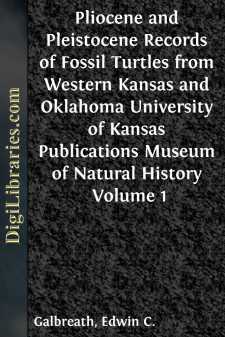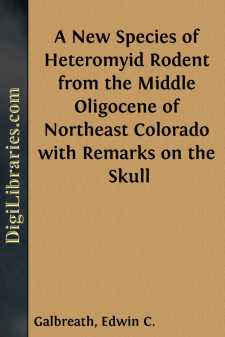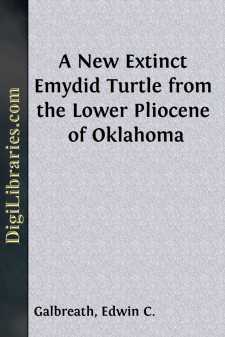Categories
- Antiques & Collectibles 13
- Architecture 36
- Art 48
- Bibles 22
- Biography & Autobiography 813
- Body, Mind & Spirit 142
- Business & Economics 28
- Children's Books 15
- Children's Fiction 12
- Computers 4
- Cooking 94
- Crafts & Hobbies 4
- Drama 346
- Education 46
- Family & Relationships 57
- Fiction 11829
- Games 19
- Gardening 17
- Health & Fitness 34
- History 1377
- House & Home 1
- Humor 147
- Juvenile Fiction 1873
- Juvenile Nonfiction 202
- Language Arts & Disciplines 88
- Law 16
- Literary Collections 686
- Literary Criticism 179
- Mathematics 13
- Medical 41
- Music 40
- Nature 179
- Non-Classifiable 1768
- Performing Arts 7
- Periodicals 1453
- Philosophy 64
- Photography 2
- Poetry 896
- Political Science 203
- Psychology 42
- Reference 154
- Religion 513
- Science 126
- Self-Help 84
- Social Science 81
- Sports & Recreation 34
- Study Aids 3
- Technology & Engineering 59
- Transportation 23
- Travel 463
- True Crime 29
Pliocene and Pleistocene Records of Fossil Turtles from Western Kansas and Oklahoma University of Kansas Publications Museum of Natural History Volume 1
Description:
Excerpt
In the vertebrate paleontological collection at the University of Kansas Museum of Natural History there are many fragments of turtles that have been collected, generally in connection with the excavation or recovery of other fossils. The generic identification of this material is possible in many instances, and such identifications give new and important geological and distributional records for genera in existence today.
All catalogue numbers refer to the vertebrate paleontological collection in the University of Kansas Museum of Natural History.
Family KINOSTERNIDAE
Kinosternon sp. No. 7729 consists of fragments of marginals, costals, and plastronal elements collected from Edson Quarry, Sherman County, Kansas. The age is middle Pliocene (Hemphillian). No. 7679, consisting of a nuchal, and fragments of marginals, costals, and neurals is from Nye Sink, XI Ranch, Meade County, Kansas, and is of Pleistocene age.
Any fossil record of Kinosternon is a welcome find, and these two specimens give new data both as to age and distribution. However, it should be emphasized that these identifications are based on fragments, and are tentative.
Family EMYDIDAE
Pseudemys sp. No. 5613, Sherman County; 6784, Seward County; and 4728, Meade County, are three of many fragments, mainly elements of the nuchal plate and plastron, that were collected from Edson Quarry, Sherman County, Kansas, and from middle and late Pliocene beds in Seward and Meade counties, Kansas, respectively. The species represented cannot be differentiated from species of Pseudemys living today. Species of Pseudemys are common also in most of the Pleistocene deposits of western Kansas.
Family TESTUDINIDAE
Testudo sp. In general, two recognizable lines of the genus Testudo existed in western Kansas during early Pliocene to mid-Pleistocene timeâa line of large testudinates with a carapace three to four feet long, and one line of smaller tortoises with a rugose carapace approximately six to nine inches in diameter. Hibbard's Testudo riggsi (Hibbard, 1944) is the best known of these smaller turtles.
Gopherus sp. No. 5935 is from the Pleistocene of Harper County, Kansas, and No. 7677 is from the early Pleistocene of Beaver County, Oklahoma. Each is composed of costals and neurals which may be referred to this genus. Their size indicates an animal considerably larger than any on record, and probably these specimens represent a new species.
Family CHELYDRIDAE
Chelydra sp. No. 6821 is the anterior part of a plastron from the Edson Quarry, Sherman County, Kansas. The age is middle Pliocene. This fragment has been listed three times in print, once merely as Chelonia (having reference to the order) (Adams and Martin, 1931), and twice by Hibbard (1934 and 1939) as Chelonia sp. Hibbard's listing was obviously a lapsus calami for Chelydra since he placed the genus in the family Chelydridae.
No. 6479 is part of a costal and marginals from Meade County, Kansas. This specimen was associated with Aenocyon dirus, and is Pleistocene in age.
Family TRIONYCHIDAE
Amyda sp. No. 6800 is part of a costal collected in Seward County, Kansas. It is possibly of early Pleistocene age. No. 7568 is part of a carapace from Meade County, Kansas, probably of the same age.
LITERATURE CITED
Adams, L. A., and Martin, H. T.




